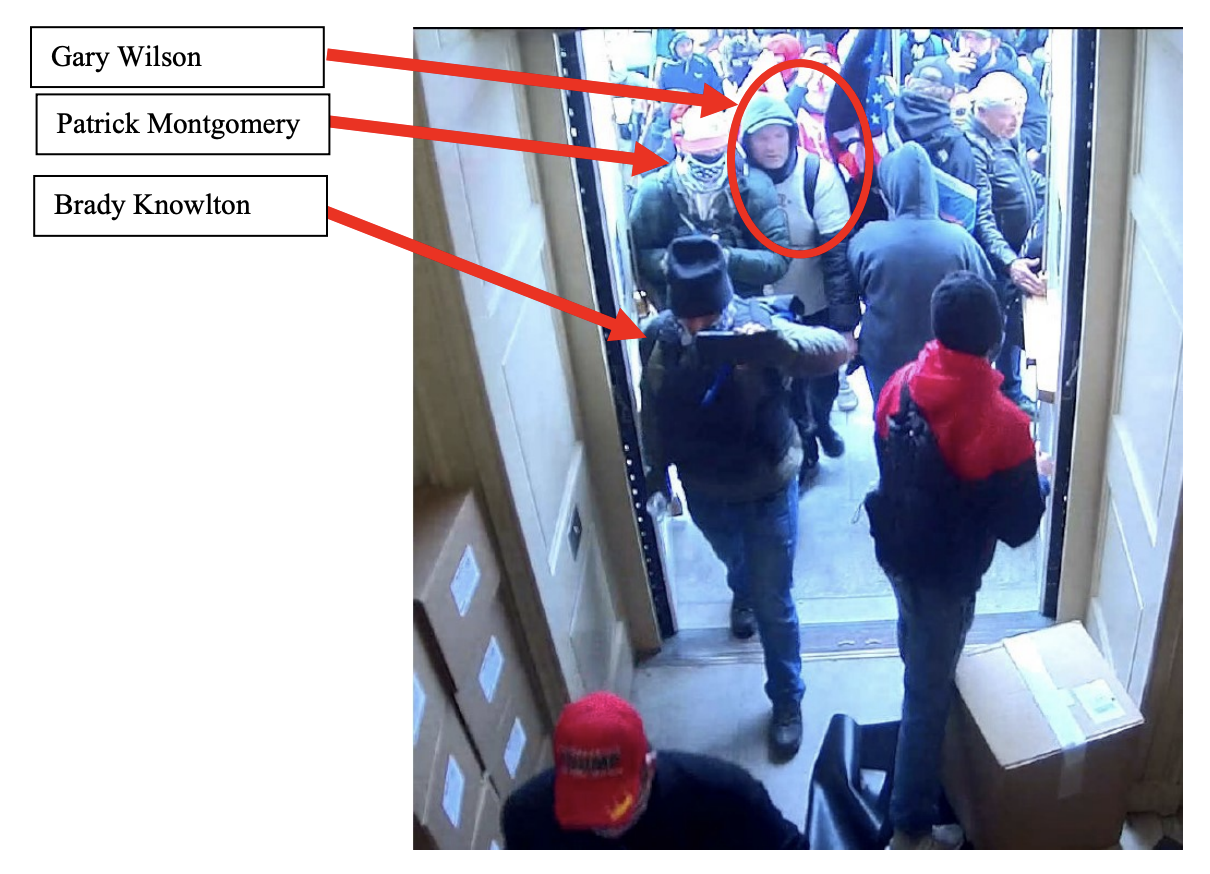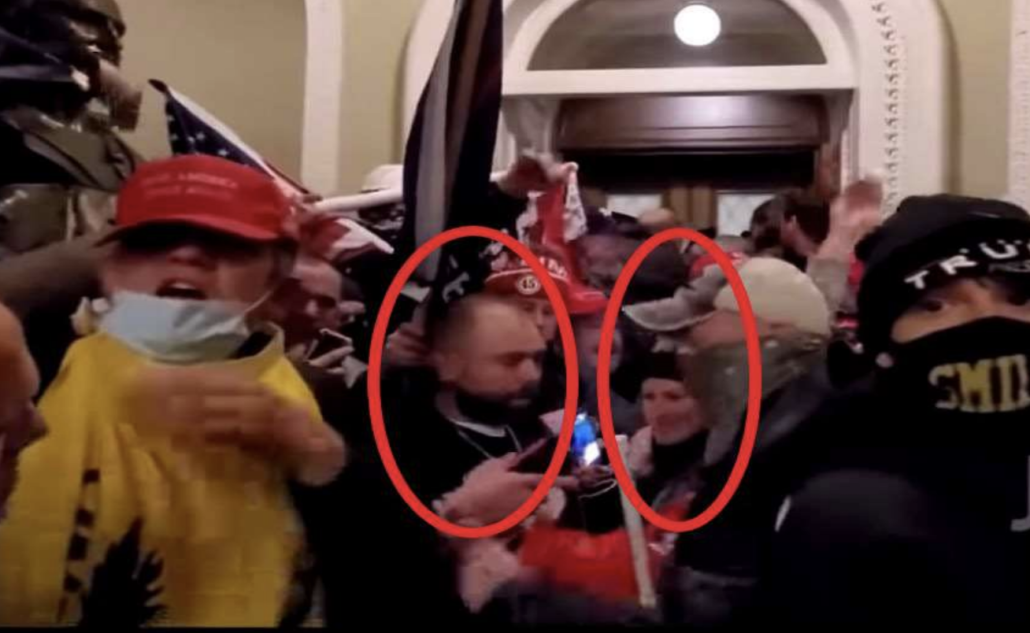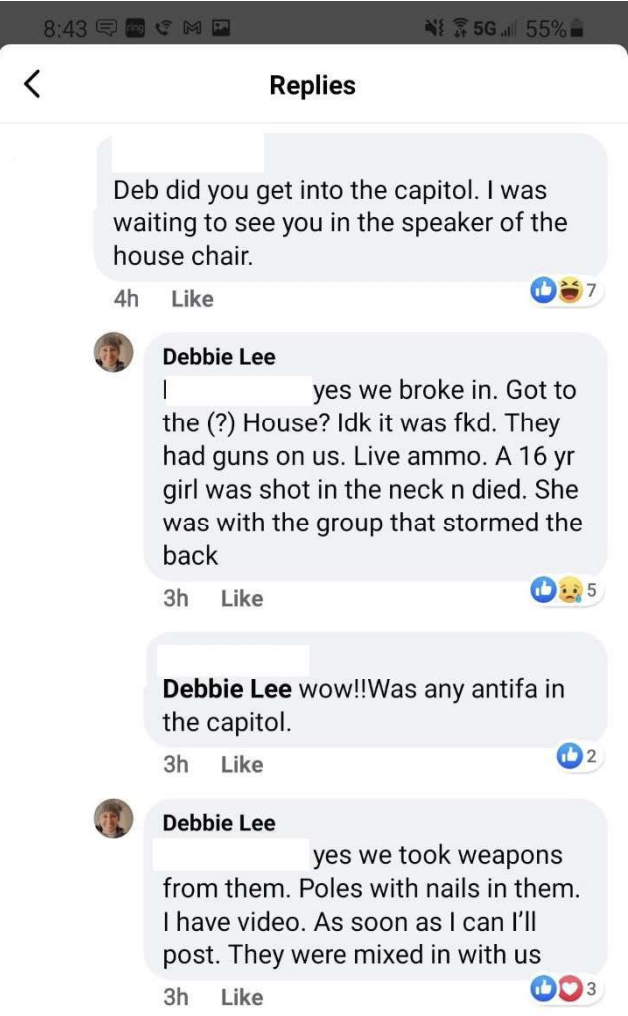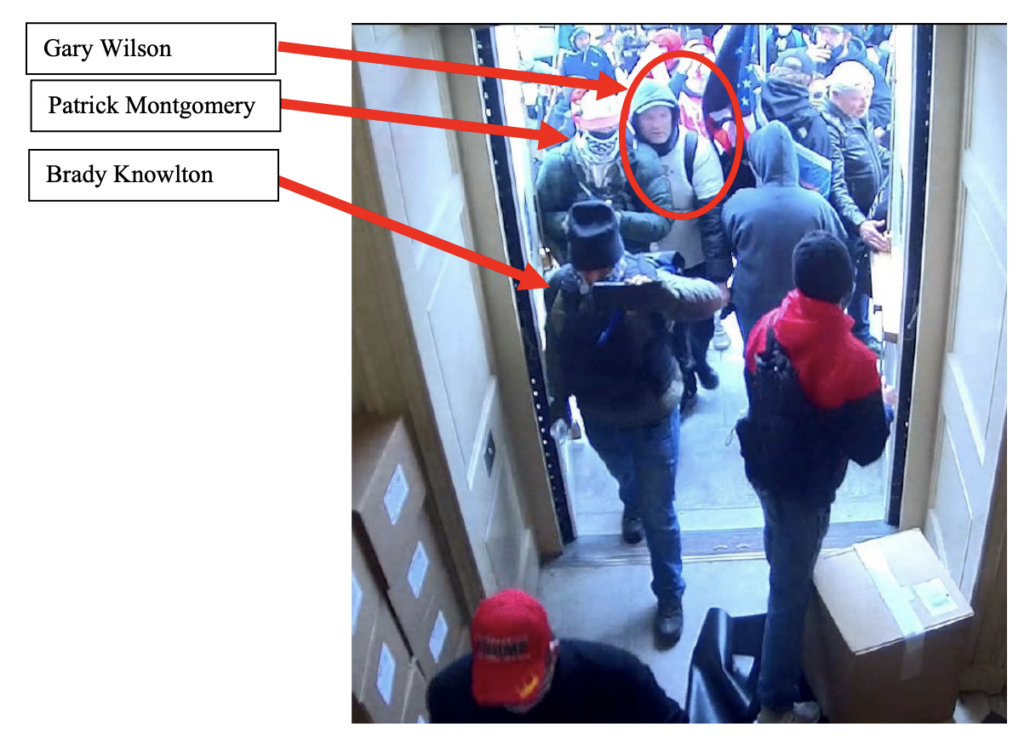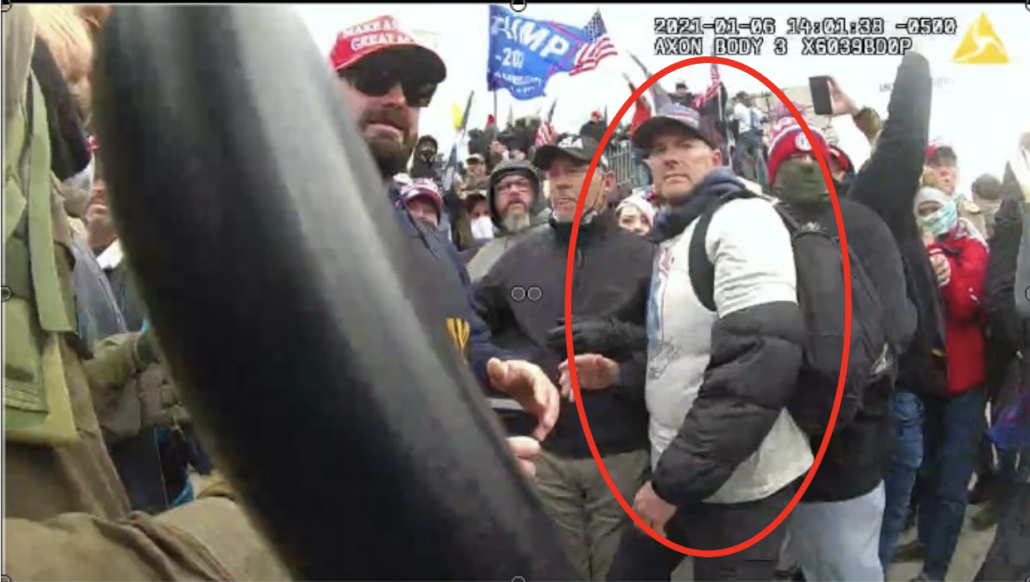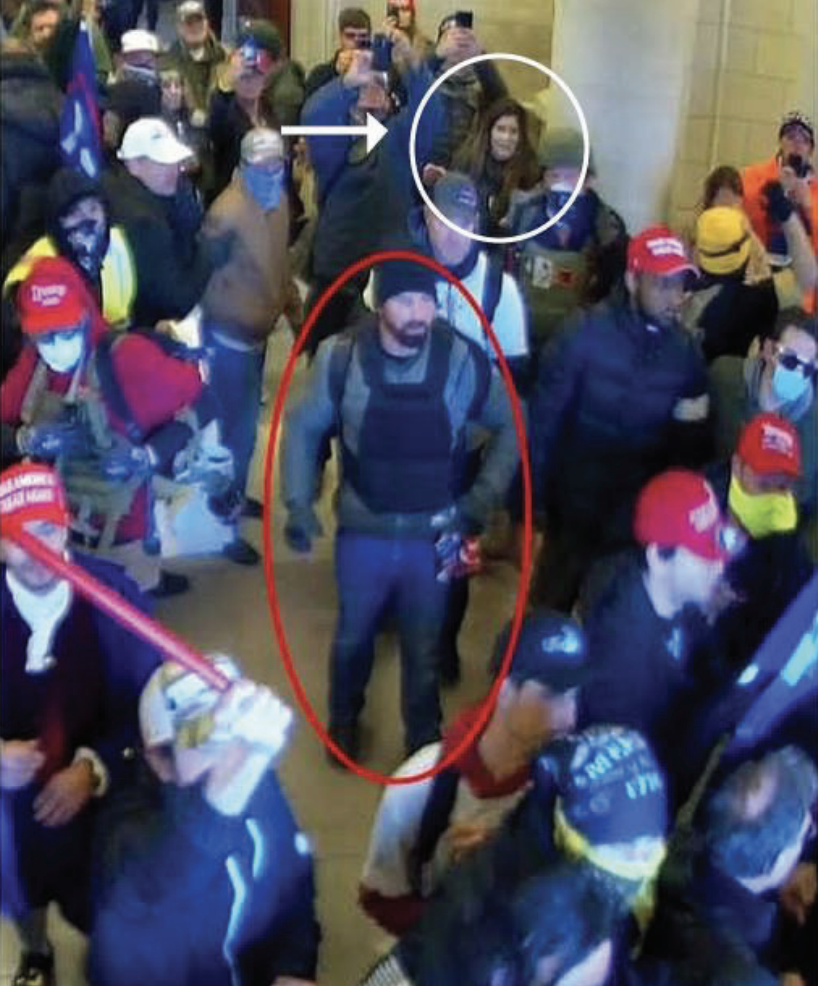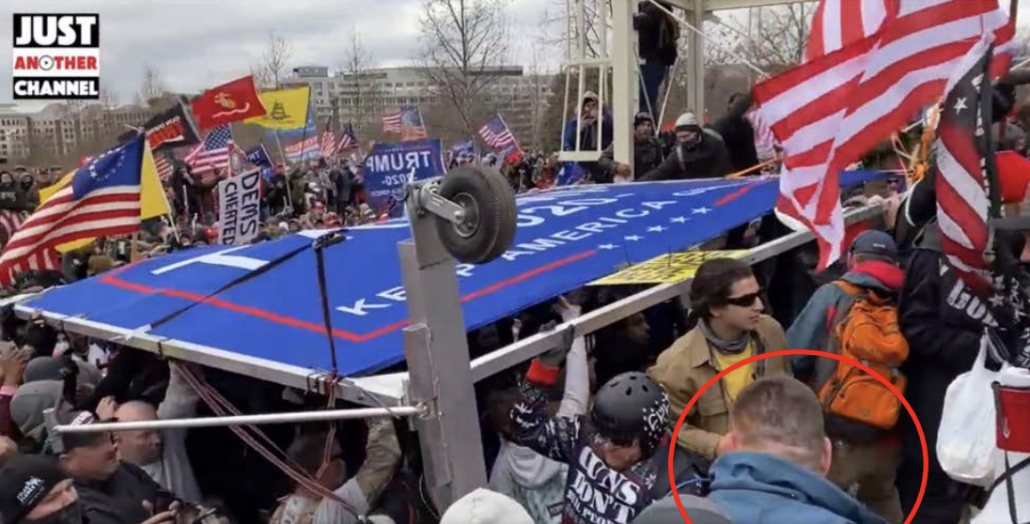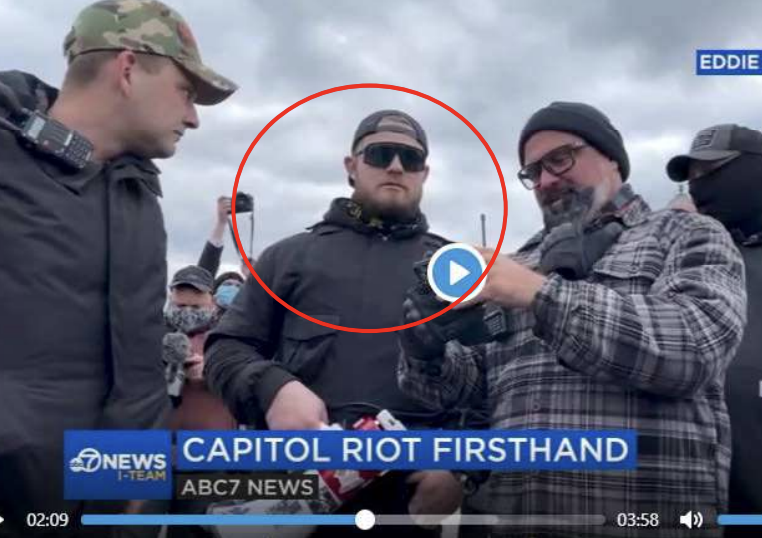January 6 Is Unknowable
Dunbar’s number is a term that describes a presumed cognitive limit to the number of people with whom an individual can maintain social relationships. It’s a way of thinking about limits to our ability to understand a network. People argue about what the actual number is, though 150 is a good standard.
Using that figure, the number of people arrested in the January 6 attack is, thus far, 4 2/3 Dunbar numbers, with two more Dunbar numbers of assault suspects identified in FBI wanted photos. By my count, one Dunbar number of suspects are charged with assault. There were one Dunbar number of police victims from that day. There have been, Attorney General Garland revealed last night, one Dunbar number of prosecutors working on the investigation. One Dunbar number of Congresspeople backed challenges to the vote certification last year, and a significant subset of those people further enabled the insurrectionists in more substantive ways. The January 6 Select Committee has interviewed two Dunbar number of witnesses about the event, a group that barely overlaps with the suspects already charged.
I think about Dunbar’s number a lot, particularly as I review the DC court calendar each morning to review which court hearings I should call into on a given day. I can rattle off the names of the January 6 defendants in all the major conspiracy cases and some less obvious key defendants about whom I’ve got real questions. But for other hearings with a 2021 docket number (the January 6 defendants make up the majority of defendants in DC last year), I need to refer back to my master list to see whether those are January 6 defendants, and if so, whether the hearing might be of import. There are five January 6 defendants with the last name Brown, five with some version of the last name Kelly (all quite interesting), three Martins, and seven Williamses, so it’s not just recognizing the name, but trying to remember whether a particular Brown is one of the really interesting ones.
Court filings are the way I go about understanding January 6. Sedition Hunters, by contrast, have worked via faces in photos, from which they effectively create dossiers on suspects of interest.
From their home offices, couches, kitchen tables, bedrooms and garages, these independent investigators have played a remarkable role in archiving and preserving digital evidence. Often operating under the “Sedition Hunters” moniker, they’ve archived more than 2,000 Facebook accounts, over 1,125 YouTube channels, 500-plus Instagram accounts, nearly 1,000 Twitter feeds, more than 100 Rumble profiles and over 250 TikTok accounts. They’ve gathered more than 4.1 terabytes ― 4,100 gigabytes ― of data, enough to fill dozens of new iPhones with standard-issue storage.
Both approaches have come to a similar understanding of the attack: that the Proud Boys led a multi-pronged assault on the building, one that is most easily seen on the coordinated assault from the Proud Boys, Oath Keepers, America Firsters, and Alex Jones on the East door. That assault on the East door appears after 22:30 on NYT’s Day of Rage on the riot, which remains the most accessible way for people to try to understand the riot. That assault on the East door, because of Pied Piper Alex Jones’ role in providing bodies, leads directly back to Trump’s request that Jones lead rally attendees from the Ellipse to the Capitol. And there are militia and localized networks that are also critical to understanding how all those bodies worked in concert on January 6. Here’s a summary of the Sedition Hunters’ understanding, which is well worth reviewing in depth.
But even though what we’re seeing is quite similar, there are gaps. Because I’m working from dockets, I’m aware of only the most important people who have yet to be arrested, whereas the Sedition Hunters have a long list, including assault suspects, prominent participants, and militia members, who remain at large. Meanwhile, I’ve identified a handful of defendants whose accomplices on January 6 are obviously of great interest to DOJ, but the Sedition Hunters aren’t always able to reverse engineer who those accomplices are based off their work.
And dockets are only useful for certain kinds of information. I track each arrest affidavit and statement of offense closely. I try to keep a close eye on changes in legal teams and developments (like continuances) that deviate from the norm, which are often the first sign that a case is getting interesting. You learn the most from detention hearings and sentencing memos. But for defendants charged by indictment and released pre-trial, the government can hide most of what it knows. And that’s assuming DOJ makes an arrest or unseals it, which it might not do if someone cooperates from the start.
The government has announced nine cooperation deals (one four months after it happened), and the subject of cooperation for two of them — Jon Schaffer and Klete Keller (whom I often get confused with the five Kellys) — is not known. It wasn’t clear that Jacob Hiles was the defendant who had gotten Capitol Police cop Michael Riley indicted until Hiles’ sentencing memo. And Hiles is not the only one being charged with a misdemeanor who cooperated to end up that way. It’s often not clear whether a delayed misdemeanor charge reflects really good lawyering or cooperation (and in the case of Brandon Straka, it seems to have been really good lawyer that nevertheless resulted in some key disclosures to DOJ).
There is a growing list of Person Ones described in court filings, Stewart Rhodes, Enrique Tarrio, Aaron Whallon-Wolkind, Alex Jones, and Morton Irvine Smith, all of whom were clearly involved in January 6 but haven’t been charged yet. Roger Stone never got referred to as Person One, but he is all over the Oath Keepers’ court filings. DOJ hasn’t named people like Mo Brooks and Rudy Giuliani when they include them in Statements of Offense, but they’re in there. So are other people who spoke on January 5.
It turns out that one means of accessing the January 6 is my forté, documents, and that of citizen researchers, collaborative research. But partly because Merrick Garland referred Michael Sherwin for an Office of Professional Responsibility investigation for publicly commenting on the investigation improperly, the normal way things get reported — by quoting sources — largely isn’t yet accessible for the criminal side of the investigation. That leads to misleading reporting like the famous Reuters article that didn’t understand the role of crimes of terrorism or a WaPo piece yesterday that unbelievably quoted Jonathan Turley claiming, “There’s no grand conspiracy that the FBI found, despite arresting hundreds of people, investigating thousands,” without labeling him as the former President’s impeachment lawyer, which is the only way Turley would be marginally competent to make such a claim. There are defense attorneys talking to the press — but the chattiest defense lawyers are the ones setting new standards for bullshit claims. The ones I’ve heard from are themselves drowning in their attempts to understand the larger investigation, both because of the sheer amount of discovery and because that discovery doesn’t tell them what is going on legally with one of the other Dunbar numbers of defendants. But in general, the ordinary sources for typical reporting aren’t talking, leading to a lot more mystery about the event.
One thing I find most striking from those who were present is their blindness. I’m haunted by something Daniel Hodges said in his testimony to the January 6 Committee: that the men and women who fought insurrectionists for hours in the Tunnel through which Joe Biden would walk to take the Oath of Office two weeks later had no idea, during that fight, that the Capitol had already been breached, and then cleared, as they continued to fight a battle of inches.
It was a battle of inches, with one side pushing the other a few and then the other side regaining their ground. At the time I (and I suspect many others in the hallway) did not know that the terrorists had gained entry to the building by breaking in doors and windows elsewhere, so we believed ours to be the last line of defense before the terrorists had true access to the building, and potentially our elected representatives.
There are similar accounts from other direct witnesses — like this chilling piece from Matt Fuller — who huddled feet away from where Ashli Babbitt was killed without knowing what was happening. Grace Segers, in her second telling of surviving that day, describes how there was no way to tell maintenance workers (there must be ten Dunbar numbers of support staff who were there that day) to take cover from the mobsters.
I have spent the better part of the year working full time, with few days off, trying to understand (and help others understand) January 6. I’ve got a clear (though undoubtedly partial) vision of how it all works — how the tactical developments in the assault on the Capitol connect directly back to actions Donald Trump took. Zoe Tillman, one of a handful of other journalists who is attempting to track all these cases (while parenting a toddler and covering other major judicial developments) has a piece attempting to do so with a summary of the numbers. But both those methods are inadequate to the task.
But thus far, that clear vision remains largely unknowable via the normal ways the general public learns. That’s why, I think, people like Lawrence Tribe are so panicked: because even beginning to understand this thing is, quite literally, a full time job, even for those of us with the luxury of living an ocean away. In Tribe’s case, he has manufactured neglect out of what he hasn’t done the work to know. To have something that poses such an obvious risk to American democracy remain so unknowable, so mysterious — to not be able to make sense of the mob that threatens democracy — makes it far more terrifying.
I know a whole lot about what is knowable about the January 6 investigation. But one thing I keep realizing is that it remains unknowable.


